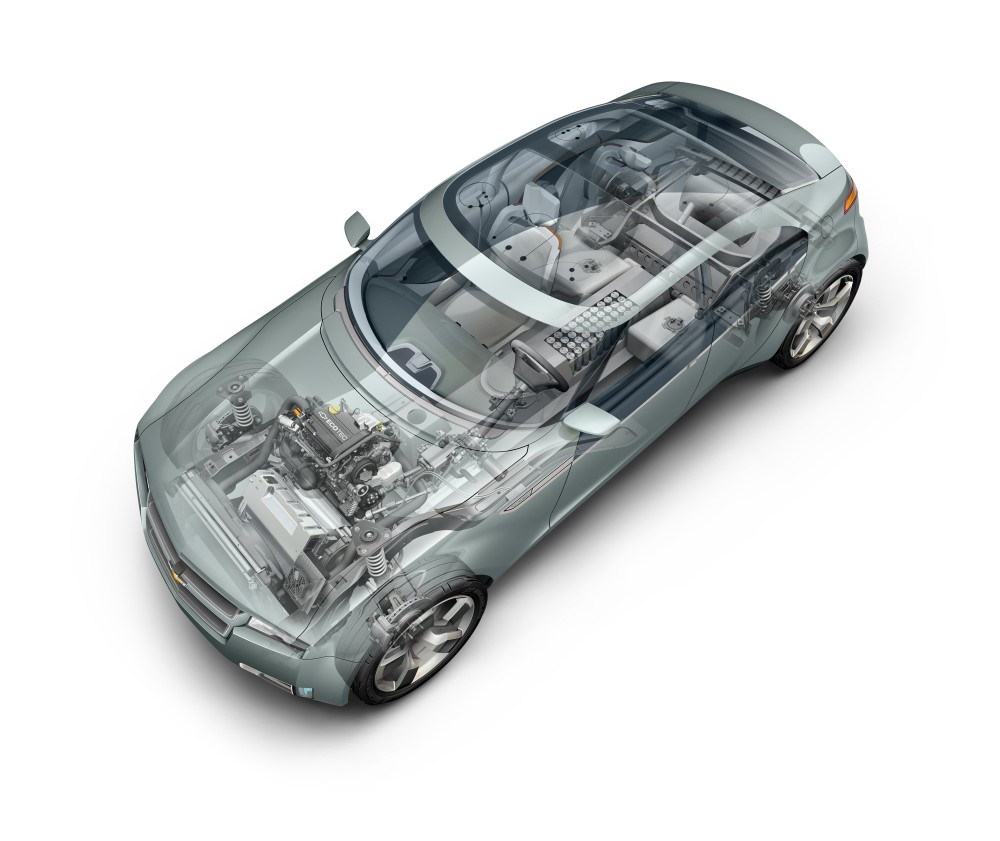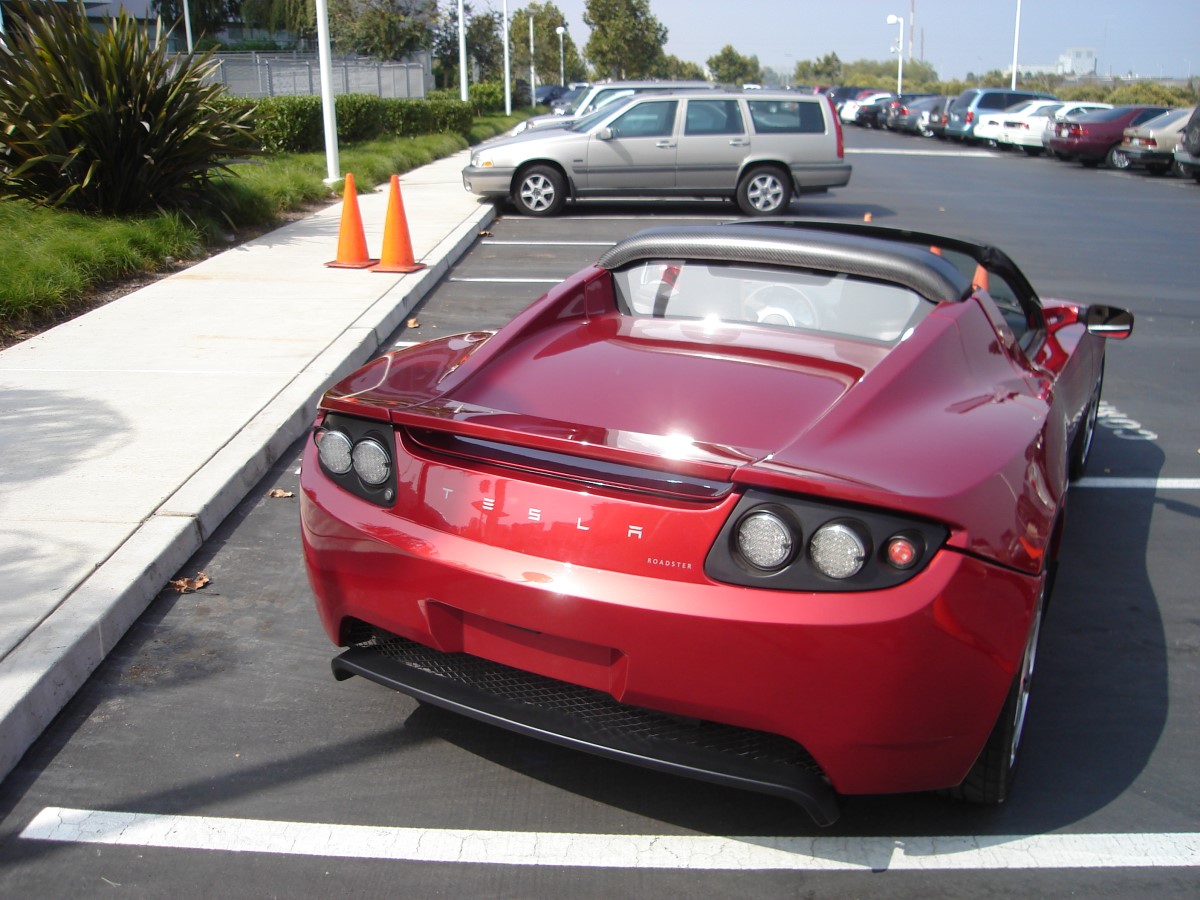Are Nuclear plants the way forward?
 |
| Will cars like the all-electric plug-in Chevy Volt be the future? |
With gasoline costs headed toward $5 per gallon and $10 per gallon quite imaginable in a few years, do GM and others have the right idea? Will plug-in electric cars be our way out of this world's endless thirst for pollution generating fossil fuels? Is it inconceivable that electricity from clean nuclear power plants could replace oil and gas as our primary source of fuel? Every serious effort at carbon accounting reaches the same conclusion: Nukes win.
Look at the environmental protection agency's CO2-per-kilowatt-hour map of the US and two bright patches of low-carbon happiness jump out. One is the hydro-powered Pacific Northwest. The other is Vermont, where a 30-year-old nuclear reactor, Vermont Yankee, keeps Vermonites powered up. The darkest area corresponds to Washington, DC, where coal-fired power plants release 520 times more atmospheric carbon per megawatt-hour than their Vermont counterpart. That's right: 520 times.
There's no question that nuclear power is the most climate-friendly industrial-scale energy source. You can worry about radioactive waste or proliferating weapons. You can complain about the high cost of construction and decommissioning. But the reality is that every serious effort at carbon accounting reaches the same conclusion: Nukes win. Only wind comes close — and that's when it's blowing. A UK government white paper last year factored in everything from uranium mining to plant decommissioning and determined that nuclear power emits 2 to 6 percent of the carbon per kilowatt-hour as natural gas, the cleanest of the fossil fuels.
Embracing the atom is a key to winning the war on global warming: Electric power from fossil fuel plants generates 26 percent of the world's greenhouse gas emissions and 9 percent of the United States' — it's the biggest contributor to global warming. And that doesn't count the emissions from our fossil fuel burning cars.
The nuclear argument, however, assumes that other clean alternatives will not improve in efficiency or affordability during the 10 years it would take to implement a nuclear program. That's short-term thinking. If we invested the money that we would spend on new nuclear facilities more wisely (and eliminated subsidies on fossil fuels), alternatives like wind, solar, hydroelectric, and wave power might deliver a clean-energy future more cheaply and probably sooner, without any of the security or health risks of nuclear plants.
Nuclear power should have a role to play, but it would be far better to create a flexible energy system that draws on many clean sources, instead of on a single panacea. A cut-carbon-at-all-costs approach blinds us to more-sustainable, and ultimately more-promising, solutions.
With that said, nuclear power is here now. We have not built a new nuclear power plant in the USA for over 20 years but the nuclear power plants we do have provide us with clean energy year in and year out. We just need more of them. In 1993 there were 109 licensed power reactors in the U.S. and about 400 in the world. They generated about 20 percent of the U.S. electricity.
The basic energy fact is that the fission of an atom of uranium produces 10 million times the energy produced by the combustion of an atom of carbon from coal.
 |
 |
| The all-electric Tesla Roadster will smoke a spanking new 'regular' Corvette |
Already Tesla Motors has developed an electric sports car that goes 0-60 mph in 3.9 seconds, which blows off a Corvette, and goes 220 miles between recharges. A full charge using the Tesla Home Charging Station (included in the price of the Tesla Roadster) can be achieved in as little as 3.5 hours.
An electric car is a bit like a cell phone: it does not matter how long it takes to charge as long as a charge lasts all day. It would be nice if you could always plug it in when you get home, and unplug it when you leave in the morning. However, that may not always be the case so we need places to recharge when getting home is not an option.
What if our government had the foresight to give tax incentives to provide a minimum number of electric outlets at every commercial establishment we frequent so that we could plug-in our electric car in the event we were running a bit low. Recharge my cars batteries while I shop for groceries will watch a movie or enjoy a nice dinner. And what if our government encouraged the building of more electricity generating nuclear power plants – clean, zero carbon emitting nuclear power plants?
And Tesla recycles your old batteries when they need replacement (after 100,000 miles) and the cost is included in their price of the car. OK, so the car costs $100,000 but Chevy promises that the mass produced Volt will be much cheaper. And at 2 cents per mile, you'll never touch that with a fossil fuel burning car.
What about Hybrids?
 |
| The popular Toyota Prius |
In 2006, an Oregon market research firm released an incendiary 500-page report. Its claim: A Humvee (13 miles per gallon city, 16 highway) uses less energy than a Prius (48 city, 45 highway). Scientists quickly debunked the study, but the Hummer lovers got one thing right. Pound for pound, making a Prius contributes more carbon to the atmosphere than making a Hummer, largely due to the environmental cost of the 30 pounds of nickel in the hybrid's battery. Of course, the hybrid quickly erases that carbon deficit on the road, thanks to its vastly superior fuel economy.
Still, the comparison suggests a more sensible question. If a new Prius were placed head-to-head with a used car, would the Prius win? Don't bet on it. Making a Prius consumes 113 million BTUs, according to sustainability engineer Pablo Päster. A single gallon of gas contains about 113,000 Btus, so Toyota's green wonder guzzles the equivalent of 1,000 gallons before it clocks its first mile. A used car, on the other hand, starts with a significant advantage: The first owner has already paid off its carbon debt. Buy a decade-old Toyota Tercel, which gets a respectable 35 mpg, and the Prius will have to drive 100,000 miles to catch up.
Better yet, buy a three-cylinder, 49-horsepower 1994 Geo Metro XFi, one of the most fuel-efficient cars ever built. It gets the same average mileage as a 2008 Prius, so a new hybrid would never close the carbon gap. Sure, the XFi has no AC or airbags — but nobody said saving the planet would be comfortable, or even safe.
But here's a scary thought – what will racing be like if all the cars are powered by silent electric motors? Without the noise will racing be the same?
This article was written by AutoRacing1.com's Mark Cipolloni and Wired Magazine
